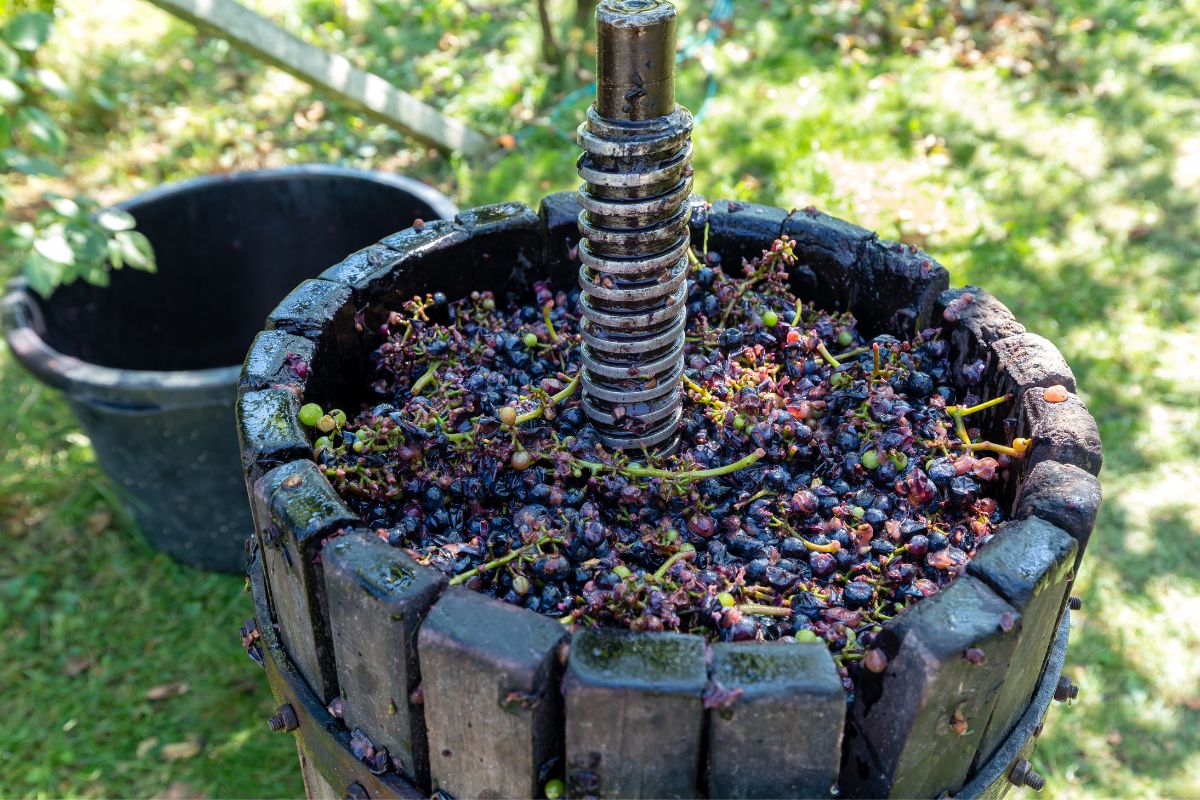Spain, a country renowned for its vibrant culture, breathtaking landscapes, and tantalizing cuisine, is also home to a diverse and esteemed wine industry.
With a winemaking tradition dating back thousands of years, Spain boasts a remarkable range of wines that captivate the palates of wine enthusiasts worldwide.

From the sun-drenched vineyards of Rioja to the rolling hills of Priorat, each Spanish wine region offers its unique terroir, grape varieties, and winemaking techniques, resulting in a captivating array of flavors and styles.
In this comprehensive guide, we will embark on a journey through Spain’s vinicultural heritage, shedding light on some of the history and features of Spanish wine as well as the country’s most notable wines and winemaking practices.
So grab a glass, uncork a bottle of Spanish wine, and join us on this immersive journey through the enchanting world of Spanish viniculture!
The History Of Spanish Wines
The history of Spanish wines is deeply rooted in ancient times, making Spain one of the oldest winemaking regions in the world.
The tradition of winemaking in Spain dates back thousands of years to the Phoenicians, Greeks, and Romans who introduced viticulture to the Iberian Peninsula.
Phoenician traders established coastal settlements in Spain around 1100 BCE, bringing with them grapevines and winemaking techniques. Greek settlers also arrived in the 6th century BCE and expanded vine cultivation further.
The Romans, during their occupation of the Iberian Peninsula, played a crucial role in spreading viticulture across the region, introducing new grape varieties, and advancing winemaking practices.
Following the fall of the Roman Empire, winemaking continued to thrive in Spain, with the influence of Christian monasteries becoming instrumental in preserving and advancing the wine culture.
Monks cultivated vineyards, developed new winemaking methods, and played a significant role in the spread of viticultural knowledge throughout the country.
During the Middle Ages, wine production and trade flourished, particularly in regions such as Catalonia and Castile. Spanish wines gained recognition and popularity both domestically and internationally, with exports reaching various parts of Europe.
However, the Spanish wine industry faced challenges in the late 19th and early 20th centuries. Phylloxera, a devastating vineyard pest, decimated vineyards across Europe, including Spain.
Many vineyards had to be replanted with disease-resistant American rootstocks, resulting in a transformation of the Spanish vineyard landscape.
In the mid-20th century, Spain faced a period of political and economic instability, which further impacted the wine industry. However, the 1970s marked a turning point for Spanish wines with the introduction of modern winemaking techniques and the focus on quality production.
Spain began embracing international grape varieties, improving vineyard management practices, and implementing stricter quality controls.
Since then, Spanish wines have experienced a renaissance and gained recognition on the global stage. The country now boasts a wide range of wine styles, from the renowned reds of Rioja and Ribera del Duero to the fresh whites of Rías Baixas and the unique fortified wines of Jerez.
Spanish winemakers have embraced both traditional and innovative winemaking methods, allowing them to produce wines that showcase the diverse terroirs and grape varieties found across the country.
Today, Spanish wines are celebrated for their exceptional quality, distinct regional identities, and a rich tapestry of history and culture that continues to evolve and captivate wine enthusiasts worldwide.

The Most Popular Spanish Wines
Spain is home to a diverse range of wines, each with its distinct characteristics and regional influences.
While popularity can vary over time and across different markets, several Spanish wines have gained widespread recognition and enjoy a strong following both domestically and internationally.
With this in mind, let’s check out some of the most popular Spanish wines.
Rioja
Rioja is perhaps the most famous wine region in Spain, known for its exceptional red wines made primarily from the Tempranillo grape.
Rioja wines are known for their balance, elegance, and aging potential. They often display flavors of red fruit, oak, and spice.
Ribera del Duero
Ribera del Duero is another highly regarded wine region, producing powerful and robust red wines primarily from the Tempranillo grape.
These wines are known for their depth of flavor, firm tannins, and excellent aging potential.
Cava
Cava is Spain’s renowned sparkling wine, produced mainly in the Penedès region in Catalonia.
Made using the traditional method, similar to Champagne, Cava offers a range of styles from crisp and refreshing to complex and toasty.
Priorat
Hailing from the rugged hills of Catalonia, Priorat wines have gained significant popularity in recent years.
Known for their concentrated flavors, structure, and unique mineral character, these red wines often blend Garnacha and Cariñena (Carignan) grapes.
Rías Baixas
Rías Baixas, located in the Galicia region, is known for its vibrant and aromatic white wines made primarily from the Albariño grape.
These wines exhibit fresh citrus and stone fruit flavors with crisp acidity.
Sherry
Sherry, or Jerez, is a fortified wine produced in the region of Jerez de la Frontera in Andalusia.
Known for its wide range of styles, from dry to sweet, Sherry offers a unique taste experience with its nutty, saline, and oxidative flavors.
Albariño
Albariño is not only popular in Rías Baixas but has also gained recognition as a distinctive white grape variety on its own.
It is known for producing aromatic, refreshing, and lively white wines with notes of citrus, peach, and floral hints.
These are just a few examples of the most popular Spanish wines, but there are many other outstanding wine regions and grape varieties in Spain that offer exceptional quality and diverse styles.
The Features Of Spanish Wines
Spanish wines possess several distinctive features that set them apart and contribute to their unique character. Here are some of the most notable features of Spanish wines.
Diversity Of Grape Varieties
Spain boasts an impressive array of indigenous grape varieties, many of which are not widely cultivated elsewhere.
These varieties showcase Spain’s rich viticultural heritage and contribute to the diversity of wine styles.
Some examples include Tempranillo, Garnacha, Albariño, Verdejo, and Monastrell, among many others.
Terroir Expression
Terroir expression refers to the concept that the characteristics of a wine are influenced by the specific combination of natural factors in a particular vineyard site.
Spain’s diverse landscapes, climates, and soils result in wines that reflect their specific terroirs.
From the cool, coastal regions of Galicia to the arid, high-altitude vineyards of central Spain, Spanish wines often exhibit a strong sense of place.
The influence of the Mediterranean, Atlantic, and continental climates can be seen in the flavors, aromas, and structure of the wines.
Aging Potential
Spanish wines are renowned for their aging potential. Traditional winemaking techniques, such as extended oak aging, contribute to the development of complex flavors, aromas, and textures over time.
Iconic regions like Rioja and Ribera del Duero produce red wines that can age gracefully for decades, offering evolving nuances and harmonious integrations of flavors.
Oak Influence
The use of oak, particularly American and French oak barrels, is a prominent feature of Spanish winemaking.
Oak aging is employed to add complexity, structure, and subtle flavors of vanilla, spice, and toasted notes to the wines.
The duration and type of oak aging can vary, resulting in a range of styles, from lightly oaked to heavily oak-influenced wines.
Traditional Winemaking Techniques
While modern winemaking methods have been adopted in recent years, many Spanish winemakers still embrace traditional techniques that have been passed down through generations.
These methods include hand-harvesting, gentle grape crushing, natural fermentation, and extended maceration, which contribute to the preservation of the varietal character and the expression of terroir.
Versatility Of Styles
Spain produces a wide variety of wine styles to suit different preferences and occasions. From the sparkling wines of Cava to the fortified Sherries of Jerez, from fresh and crisp whites to bold and robust reds, there is a Spanish wine for every taste.
The country’s diverse regions and grape varieties allow for the production of an extensive range of wines to explore and enjoy.
Value For Money
Spanish wines often offer excellent value for money, providing high-quality wines at accessible price points.
With a wide range of options available across different price ranges, Spanish wines offer an opportunity to discover and enjoy exceptional wines without breaking the bank.
These features contribute to the allure and appeal of Spanish wines, making them a favorite choice among wine enthusiasts seeking diversity, character, and value in their wine selections.

Spanish Winemaking Practices
Spanish winemaking practices encompass a blend of traditional methods that have been passed down through generations and modern techniques that have been embraced to enhance quality and consistency.
These practices vary depending on the specific region and style of wine being produced, but here are some particularly noteworthy key aspects of Spanish winemaking.
Grape Cultivation And Harvesting
Spanish winemakers carefully manage their vineyards, considering factors such as soil types, sun exposure, and altitude to optimize grape quality. They may use traditional vine training methods like the goblet or bush vine system or modern trellising systems.
Spain is home to a wide range of indigenous grape varieties, each with its unique characteristics. Some regions also cultivate international varieties. Winemakers choose the grape varieties best suited to their terroir and desired wine style.
Grapes are typically handpicked to ensure optimal ripeness and quality. Harvesting times can vary depending on the region and grape variety, with some vineyards opting for multiple passes through the vineyard to select grapes at different stages of ripeness.
Winemaking Techniques
Grapes are crushed and pressed to extract the juice, which is then fermented to convert sugars into alcohol.
Fermentation can take place in stainless steel tanks, concrete vats, or oak barrels, depending on the desired style of wine. Temperature control during fermentation is crucial to preserve aromas and flavors.
Some Spanish wines undergo aging to develop complexity and character. Aging can occur in oak barrels, both American and French, as well as in bottles. Different regions and wine styles have specific aging requirements and regulations.
Blending is also a common practice in Spain, especially for wines with Designation of Origin (DO) status. This process involves combining different grape varieties or wines from different vineyards to achieve a desired flavor profile and balance.
In regions like Jerez, winemakers fortify their wines by adding grape spirit (brandy) to achieve specific styles, such as Sherry.
Quality Control And Labeling
Spain has several regulatory bodies that oversee wine production and quality, including the Consejo Regulador (Regulatory Council) in each Denomination of Origin (DO) and the Instituto Nacional de Denominaciones de Origen (National Institute of Denominations of Origin, INDO).
Spanish wines are classified based on the quality hierarchy, which includes denominación de origen calificada (DOCa), denominación de origen (DO), and Vino de la Tierra (VdlT). Labels often provide information about the region, grape variety, aging, and other relevant details.
These winemaking practices, along with the influence of terroir and the expertise of Spanish winemakers, contribute to the diversity and quality of Spanish wines.
The combination of tradition and innovation in winemaking ensures that Spain continues to produce wines that captivate wine enthusiasts worldwide.
Final Thoughts
Spanish wines offer exceptional value for the quality they deliver. With a wide range of styles, from everyday sippers to prestigious collectibles, Spanish wines cater to every budget and occasion.
Whether you’re exploring the affordable delights of Rías Baixas Albariño or indulging in the splendor of a top-tier Priorat, the value proposition of Spanish wines is hard to match.
Above all, the beauty of Spanish wine lies in its ability to bring people together, fostering shared moments of joy, celebration, and connection.
From lively tapas bars in Barcelona to intimate family gatherings in the countryside, Spanish wines complement the warmth and conviviality of Spanish culture, enriching the experiences and memories we create!
So, as you embark on your exploration of Spanish wines, immerse yourself in the stories, uncork the bottles, and allow your senses to be captivated by the richness and diversity of flavors that Spain has to offer. Salud!
- Why Does Wine Taste Better With Age? - June 14, 2023
- What Does It Mean When A Bottle Of Wine Is Corked? - June 14, 2023
- Wine Fridge Vs Wine Cellar – Which One Should You Choose? - June 14, 2023
